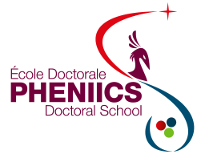Orateur
Mlle
Maíra Dutra
(Laboratoire de Physique Théorique d'Orsay)
Description
For more than 80 years ago, the existence of a "dark" component in our Universe was proposed regarding astrophysical observations. Since that time, several other hints (rotation curves of the galaxies, bullet-cluster, measurement of the Cosmological Microwave Background) came to confirm this hypothesis. However, the situation seems today even less clear than ever. This is the consequence of the recent explosion in the field of experimental data accessible in this international race between the space (FERMI, AMS, PLANCK, XCHANDRA) and the ground (IceCube, HESS, LUX, EDELWEISS, XENON, PANDAX), between continents (China decided recently that dark matter searches is a national priority at the same level that an next generation collider) and between models (from the milli-electronvolt axion to the multi-Peraelectronvolt WIMPZILLA). In the same manner, we also know that the Standard Model of Particle Physics is incomplete (neutrino mass, unification of gauge couplings, lepto/baryogenesis, instability of Higgs potential at an intermediate scale). Indeed, at a time where the LHC will furnish a lot of new data from 2015 till 2018, its center of mass energy will go beyond 10 TeV. It is nowadays not possible anymore to remain ourselves in the effective context, as the Fermi theory was valid only below the electroweak energy scale. As the presence of the W+ boson implies a considerable sum of consequences that an effective low energy model is unable to explain, a dark matter model taking into account theoretical considerations as obvious as renormalizability or dynamical breaking of symmetry, implies non-trivial consequences at low energy. The aim of the present thesis is to insert possible answers to the dark matter problem within cosmological scenarios in the framework of coherent quantum field theories valid up to the Planck scale. This will be made by deducing specific phenomenological signatures of dark matter particles in reasonable extensions of the Standard Model and comparing them to the experimental data.
Auteurs principaux
Mlle
Maíra Dutra
(Laboratoire de Physique Théorique d'Orsay)
Dr
Yann Mambrini
(Laboratoire de Physique Théorique d'Orsay)



